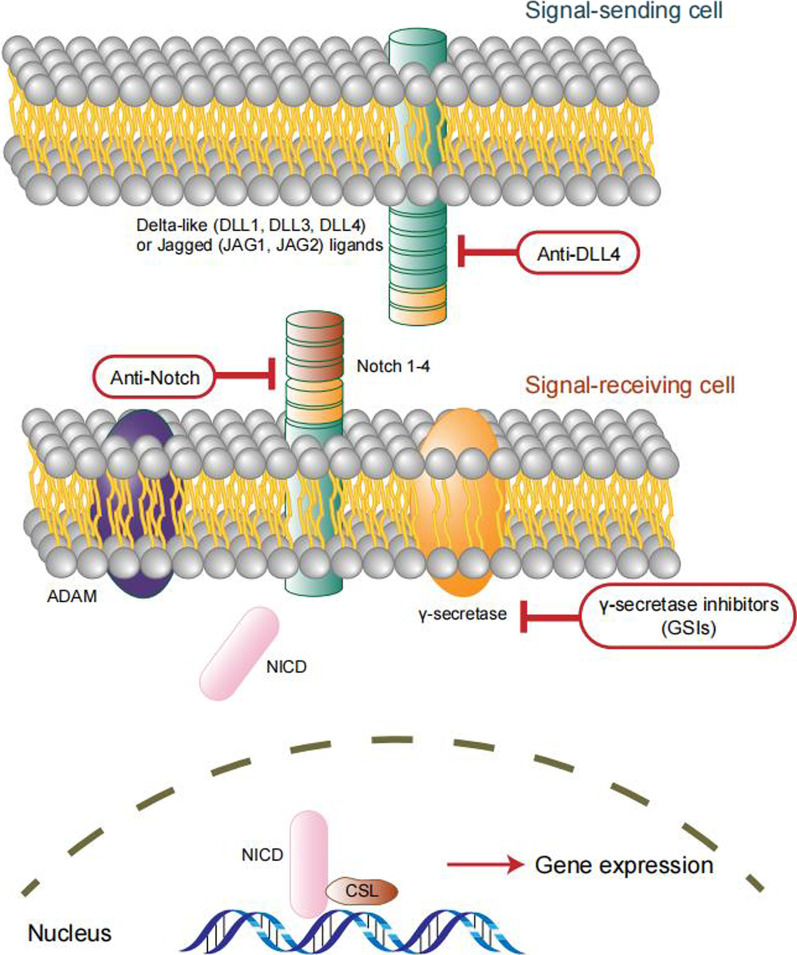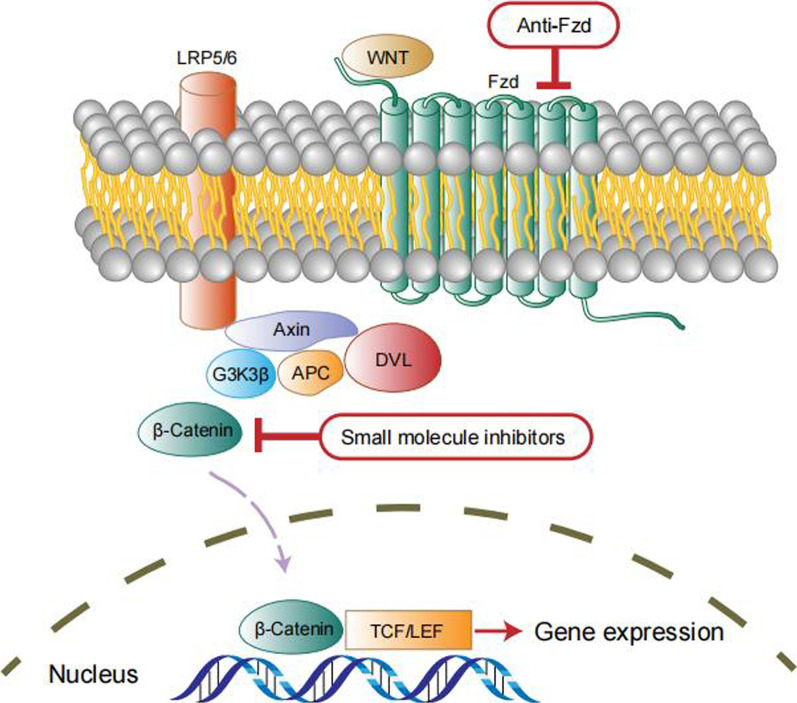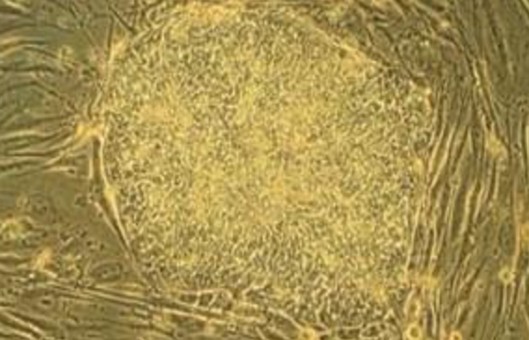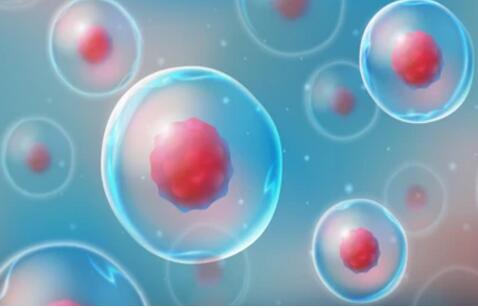Ovarian Cancer Stem Cell-Related Signaling Pathways
Stem Cell Research and Therapy. 2023 Feb 14; 14 (1): 28.
Authors: Ma H, Tian T, Cui Z.
INTRODUCTION
Ovarian cancer (OC) is the most lethal gynecological malignancy due to tumor heterogeneity, the lack of reliable early diagnosis methods, and the high incidence of chemo-resistant recurrent disease. A range of signaling pathways was shown to regulate the maintenance, self-replication, differentiation, and drug-resistance properties of ovarian cancer stem cells (OCSCs). Identification of signaling pathways regulating OCSCs is the key to eradicating OCSCs and in turn harnessing drug resistance and relapse of tumors.
Notch Signaling Pathway
- The Notch signaling pathway is one of the vital pathways that constitute the CSC signaling network and is responsible for CSC maintenance, proliferation, and differentiation. There are four Notch receptors (Notch 1-4). In particular, the Notch3 signaling pathway is important for OCSC maintenance and tumor resistance to platinum. Notch3 is overexpressed in more than 20% of ovarian serous adenocarcinomas and is related to aggressive subtypes.
 Fig. 1 Notch signaling pathway in OCSCs.
Fig. 1 Notch signaling pathway in OCSCs.
- There are several Notch pathway inhibitors with different targets and mechanisms of action. γ-Secretase inhibitors (GSIs) are the most classical agents targeting Notch signaling and block the second proteolytic cleavage of Notch receptors and the Notch intracellular domain. In addition to GSIs, some other compounds that inhibit Notch, such as withaferin A (WFA), have been proven to suppress tumor growth and eliminate CSCs.
Wnt/β-Catenin Signaling Pathway
- The wingless/integrated (Wnt) signaling pathway is divided into the β-catenin-dependent pathway and the noncanonical Wnt pathway. It plays a significant role in cell proliferation, differentiation, migration, and organ development in the period of embryogenesis. Wnt signaling requires a complex combining frizzled (Fz) and lipoprotein receptor-related protein (LRP)-Wnt-induced Fz-LRP6 complex, and complex phosphorylation is a key event in receptor activation, resulting in stabilization of β-catenin. β-Catenin and transcriptional coactivators such as T cell factor (TCF) form complexes that contribute to the transcription of Wnt-responsive genes, inducing cellular responses.
 Fig. 2 Wnt/β-catenin signaling pathway in OCSCs.
Fig. 2 Wnt/β-catenin signaling pathway in OCSCs.
- Wnt/β-catenin has also been associated with the progression and development of cancer, and it has been identified as one of the most vital pathways involved in CSC maintenance. Accumulated β-catenin activates β-catenin signaling and results in excessive stem cell renewal and proliferation in colorectal cancer. It has been claimed that the Wnt/β-catenin signaling pathway is activated in OCSCs, and targeted inhibition of β-catenin potently sensitizes cells to cisplatin and decreases OCSC sphere formation.
PI3K/AKT/mTOR Signaling Pathway
The phosphoinositide 3-kinase (PI3K)/AKT/mammalian target of the rapamycin (mTOR) pathway links the response to growth-related hormone receptor interactions to downstream targets, affecting cell proliferation, survival, and apoptosis. The PI3K/AKT/mTOR pathway, found in approximately 70% of ovarian cancers, is associated with aggressive phenotypes, chemoresistance, and poor prognosis. PI3K activates AKT/mTOR/p70S6K1 signaling to regulate the G1 cell cycle and apoptosis in ovarian cancer, and inhibition of the PI3K/AKT/mTOR pathway has been found to disrupt ovarian cancer cell proliferation and trigger cell death.
Other Signaling Pathways
- The Nuclear factor-κ light chain enhancer of activated B cells (NF-κB) is a group of transcription factors involved widely in inflammation, cell growth, and apoptosis, including RelA (p65), c-Rel, RelB, p50 (NF-κB 1) and p52 (NF-κB 2). The NF-κB pathway can be divided into canonical and non-canonical pathways, which may be crucial to the maintenance of the proliferative cell population and CSC populations in tumors, respectively.
- The Hippo signaling pathway, consisting of a broad range of proteins, is a highly evolutionarily conserved regulator of biological processes, including differentiation, cellular proliferation, and cell growth. The core of the Hippo pathway comprises a core kinase cassette that consists of protein kinase MST1/2 and tumor suppressor LSTSA/2. The major targets of the Hippo pathway are Yes-associated protein (YAP) and transcriptional coactivator with PDZ-binding motif (TAZ), whose activity is controlled by multiple upstream branches. While plenty of researches show that the activation of YAP and TAZ can induce CSC properties in various malignancies, they can be prevented from interacting with the transcriptional enhancer factor TEA domain family (TEADs) for suppressing the transcription of target genes.
Creative Bioarray Relevant Recommendations
| Product Types | Details |
| QualiCell® Human (Parental) Ovarian Cancer Stem Cell -XLC478 | Source: Human (Parental) Ovarian Cancer tissue. Positive Markers: CA125, CEA, CD9, CK-7, CD47, CA 72-4, HCG and/or AFP, CD133 (3- 5%). |
| QualiCell® Human Ovarian Cancer Stem Cell -XLC496 | Source: Human Ovarian Cancer tissue. Positive Markers: CD44, CD133, SSEA 3/4, Oct4, Tumorigenicity (< 1000 cells), Alkaline Phosphatase, Aldehyde Dehydrogenase, Telomerase, Sox2, Nanog, cKit, Nestin, Lin28. |
| SuperCult® Human (Parental) Ovarian Cancer Stem Cell Media | This product is tissue tested and is available as a 500 ml sterile filtered unit. The product is also available as a pack of 6, 500 ml unit sizes. |
| SuperCult® Human Ovarian Cancer Stem Cell Culture Media | This product is tissue culture tested including stem cells and is available as a 500 ml sterile filtered unit. The product is also available as a pack of 6, 500 ml unit sizes. |
RELATED PRODUCTS & SERVICES
Reference
- Ma H, et al. (2023). "Targeting ovarian cancer stem cells: a new way out." Stem Cell Res Ther. 14 (1), 28.




